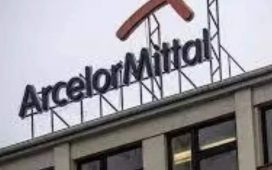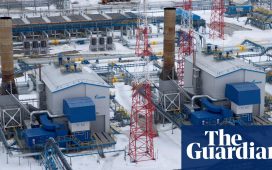“India’s time has come both due to its own internal development and hard work of structural improvements over the years,” said David Gross-Loh, managing partner, Asia, Bain Capital.
Gross-Loh, a Bain consultant-turned-deal maker, has led some of the largest buyouts for the Boston-headquartered investment company in the region such as the $20-billion takeover of Toshiba‘s memory chip business, rebranded, later as Kioxia. “The external geopolitical factors and slowing global growth and greater macro complexity of other markets have made India kind of really the place to be,” he said.
Echoing his sentiments, Pavninder Singh, partner, PE, Bain Capital in India, said over the last 15 years there have been moments when India has been a focus of global investors and moments when it was not.
“Right now is definitely a time when there is a lot of optimism and interest in India and this has the potential to be more enduring. The groundwork that’s been laid for creating digital and physical infrastructure plus a stable, consistent government, has created an environment to attract investment,” Singh said.
Bain, which has $180 billion of assets under management, sees the US economy still facing headwinds. Interest rates will probably be higher for a longer period because of other inflationary pressures “that are still fairly persistent out there and they look like they’re mid-term or may be even longer-term structural challenges,” says Gross-Loh. A complicated geopolitical landscape is further exacerbating the macro challenges. “The US economy is really not out of the woods,” Gross-Loh said.

More Deals in 2024 Likely
He, however, agrees that most US investors feel rates have peaked and that led to capital markets reopening last year. That, in turn, also saw buyer and seller expectations starting to close, which is also a positive catalyst. But directionally 2024 could see more deal activity than 2023 but “I’m not sure I see this big avalanche kind of coming,” said Gross-Loh.
Asia, on the other hand, has seen a record year for the firm on all fronts – from capital raise, deployment and exits and returns. In India, exits from JM Baxi Ports and Logistics through a strategic stake sale to Hapag-Lloyd or acquisitions of specialty chemicals maker Porus Labs and Adani Capital were some of the firm’s marque trades in 2023. It also completed a successful final close of Bain Capital Asia Fund V at $7.1 billion, well exceeding its target of $5 billion by 40%. “There is definitely a lot of desire on the part of LPs to get more India exposure and back platforms that have a strong track record in India,” said Singh.
The run-up in the public markets in India has indeed made deal-making difficult, but not impossible. “There are pockets of opportunity. There are some businesses where public markets aren’t a viable alternative either just because of where they are or because of what shareholders want,” said Gross-Loh.
IPOs Giving Competition
The booming primary markets and the long queue of initial public offers (IPOs) will be a competition to private equity deals. “But net-net, I still think there will be a good amount of private market and private equity deal-making,” Singh added. The chances of deals actually consummating will depend on “what the sellers really want to do and how committed or not committed they are”.
The heightened role of governments in M&As as well as creating industrial policies to woo industrial and manufacturing supply chains that are getting reoriented is creating roadblocks, especially in sensitive and strategic technology sectors like semiconductors, as well as, new opportunities. “We’re looking at a lot of domestic manufacturing investments in the US that we never would have looked at 10 years ago because we were afraid all those businesses were going to move to China. And now, they’re in the right place at right time, and they’re getting government money,” said Gross-Loh.
Even in India, the China+1 theme further supported by the production-linked incentive (PLI) scheme led Bain to buy into Porus Labs. “Across auto components, electronics or contract manufacturing in pharma, there is a large opportunity in all these segments for made-in-India for the world,” added Singh.
Retail, Fin Services Top Verticals
Beyond manufacturing and industrials, sectors like retail and consumer or financial services and healthcare remain top verticals for Bain globally and in India. “The other ones will be nuances on sectors that have been active in the past. So IT services will continue but one will also see more product-oriented business like software as a service, cloud and analytics. In the last couple of years, investments in those segments had more of a venture growth flavour to them. But over the next five to 10 years, you will see a number of more mature and scaled private equity investments in them as well,” said Singh.








